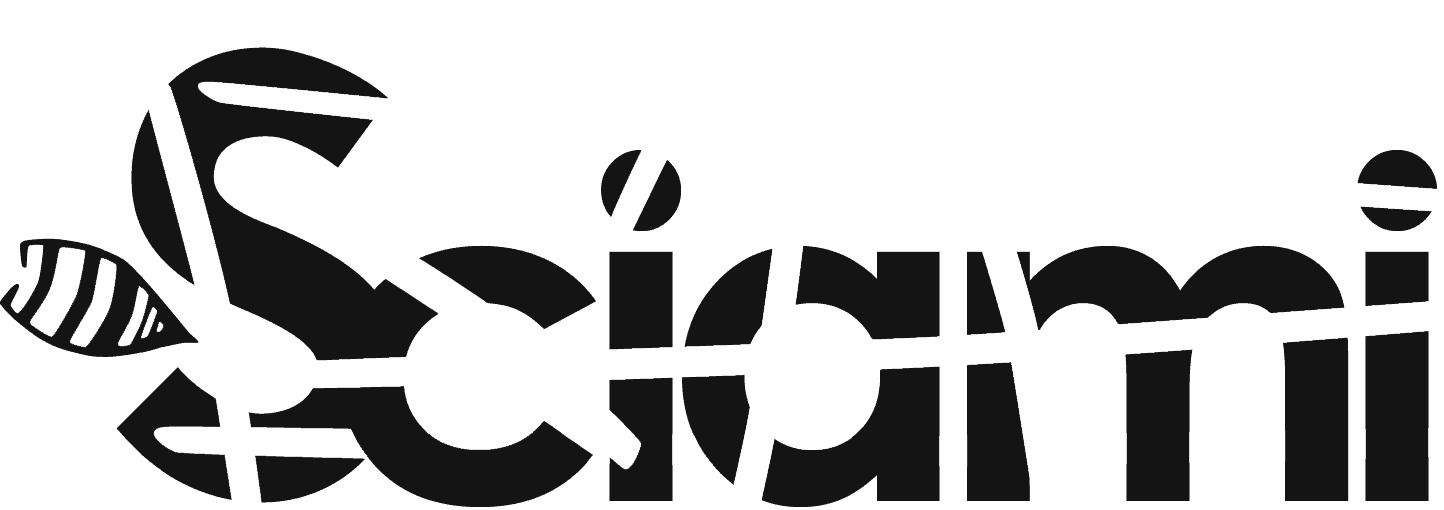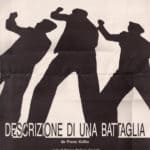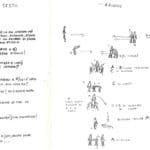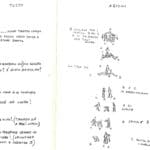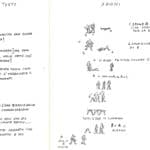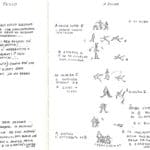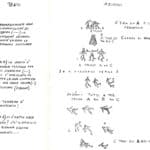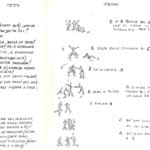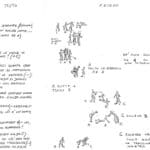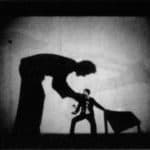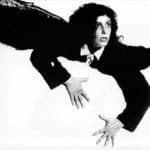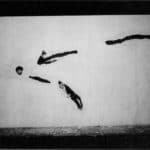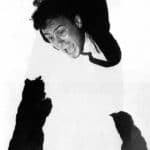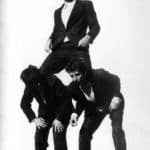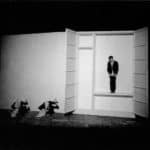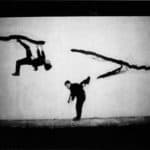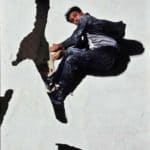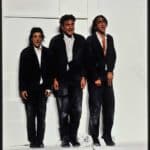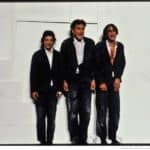Descrizione di una battaglia. 1988.
From Franz Kafka. Adapted by Giorgio Barberio Corsetti from the short stories The Burrow, The Judgement and Description of a Struggle in their translations by Ervino Pocar
Directed by Giorgio Barberio Corsetti
With Benedetto Fanna, Giovanna Nazzaro, Giorgio Barberio Corsetti
Artistic collaboration Catherine Mc Gilvray
Music by Daniel Bacalov, Galliano Prosperi and Gianfranco Tedeschi
Sets by Giorgio Barberio Corsetti and Mariano Lucci
Films by Italo Pesce Delfino
Lights by Alberto Chinigò
Costumes by Eve Kohler
Organisation Marilisa Amante
Co-produced by Compagnia teatrale G. Barberio Corsetti and Inteatro/Polverigi-AMAT in collaboration with the culture programme of the council of Rome
Descrizione di una battaglia. 1988.
by Catherine Anne MC Gilvray
Staged as a theatrical “execution” of Kafka’s literary universe, Descrizione di una battaglia (“Description of a Struggle”, 1988) appropriates themes, figures and situations that are typical of the author, graphing a path through Kafka’s imagination. The performance stages Kafka’s creatures and has characters from Kafka interacting with each other (lifted not only from the three stories the performance declaredly draws on, but also from other works); in doing so, the piece effectively stages the structural specificities of Kafka’s works, not only its contents. As such, Descrizione adopts the procedures that allow Kafka to use literature to create a parallel universe, and organises the theatre according to those procedures, with the actors as its main characters.
The guiding ideas are Rhythm and Repetition, which are evident in some of the performance’s mechanisms: there is a repetition of gestures and shapes (such as the recurring curved position, and repeated gestures such as dusting down one’s coat with both hands and banging one’s head against the wall), a mirroring of themes through compositional structures (an example is the triplication of the character, reflected also in the presence of three musical instruments, three narrative situations and three environments), a presence of musical leitmotifs and a rhythmic repetition of combined movements as well as, finally, the circular composition of the performance itself, which concludes with a return to its beginning. These elements demonstrate how a structural form is employed as a building block of the content of the show and of its themes: the formal procedure of repetition takes on a thematic value linked to the subjective condition that lies at the heart of the show – the fact of repeating a failed attempt, or of obsessively and apparently nonsensically playing back a painful memory are built into the performance’s formal structures.
Documents are published in original language. In case the translation is present, both the original and the translation are published.
Giorgio Barberio Corsetti, Catherine McGilvray (by) Descrizione della battaglia, in G. B. Corsetti, R. Molinari (by), L'attore mentale, Ubulibri, Milan, 1992
Giorgio Barberio Corsetti, Descrizione della battaglia, in G. B. Corsetti, R. Molinari (by), L'attore mentale, Ubulibri, Milan, 1992
Franco Quadri, Quei tre mostri sepolti nella tana, «la Repubblica», October 27, 1988
